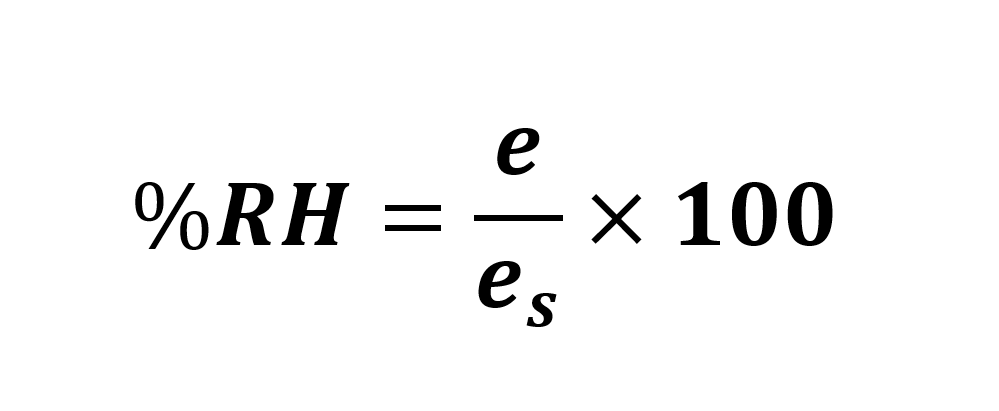Humidity calibration is highly specialised, but with the right knowledge and equipment, it’s something that can be carried out in-house with minimal training. Whether you are considering the options for in-house humidity calibration or working with external calibration laboratories, you will find this glossary of calibration terms useful.
Absorption (of water vapor)
Retention (of water vapor) by penetration into the bulk of a material
Adsorption (of water vapor)
Retention (of water vapor) as a surface layer on a material
Condensation
Condensation occurs when a vapor is compressed or cooled to its dew point, at which point its state changes from gas to liquid. This is often manifested as liquid droplets on a solid surface which is cooler than the dew-point temperature of the vapor.
Contaminant
An undesirable particulate, liquid or vapor component in a sample gas.
Desiccant
Any substance which exerts a drying action by chemically absorbing water vapor
Dew Point (or dew point temperature) (°Cdp or °Fdp)
The dew point is the temperature at which condensation occurs if a gas is cooled (at constant pressure). This is in effect, the temperature at which a gas becomes saturated in equilibrium with water vapor. Dew point relates directly and uniquely to the water vapor pressure.
Frost point (or frost-point temperature)
The temperature at which ice forms on cooling a gas. This is, in effect the temperature at which air is saturated in equilibrium with ice. It is the exact counterpart to dew point (though values differ).
Confusion can arise from the fact that condensation formed below 0 °C is not necessary ice. At temperatures down to -30 °C there is a high likelihood that condensation will occur in liquid phase, known as super-cooled water. The condensation temperatures for water and ice differ in this temperature range for a gas of the same moisture content.
Care must be taken when interpreting the measurements of condensation dew-point meters, to correctly determine the state of the condensate. The term "dew point" is often used generally to also include "frost point".
Humidity
The presence of water vapor in air or another gas
Hygrometer
Any instrument for measuring humidity
Hygrometry
The measurement of humidity is called hygrometry, derived from the Greek term 'hygros' meaning moist. Hygrometry is the subject of humidity measurement.
Inert gas
Chemically non-reactive gas, such as nitrogen, helium, argon etc.
Manifold
A sample chamber designed to accommodate multiple probes or sensors, for the purpose of exposing them to humidity-controlled calibration air or gas.
Mixing Ratio
Mass of water vapor per unit mass of dry air with which it is associated. It is a dimensionless ratio but is often expressed in grams of water per kilogram of dry gas (g.kg-1) or in other units of mass. For low levels of moisture content, this may be expressed in parts per million by weight, i.e. mass of water vapor per million parts of dry gas (ppm or ppm(W)).
Moisture
Refers to liquid water or water vapor in any form
Partial pressure (of water vapor)
The part of the overall pressure exerted by the water vapor component in a gas. Expressed in units of pressure such as Pascal (100 kPa = 1 bar)
Parts per million
The total quantity of water vapor present in a gas, expressed as a fraction of 1x106. Abbreviated as "ppm", the unit can be in terms of total gas volume (ppmV), or molecular weight (ppmW). For actual vapour pressure; e (in Pascals), and total gas pressure; p (in Pascals):

Platinum Resistance Thermometer
A highly accurate type of resistance temperature sensor commonly used in instrumentation. Also known as an RTD, PRT or PT100.
Probe
Part of the instrument that houses the sensor remotely from the main body of the instrument.
Relative Humidity
The relative humidity of a gas expresses how much water vapor it contains in relation to the total amount of water vapor sustainable at that temperature. This is defined as: the ratio of the actual vapor pressure to the saturation vapor pressure over a plane liquid water surface at the same temperature, expressed as a percentage.
Although this is not a recognised abbreviation, the phrase "relative humidity" is commonly abbreviated RH, as in "X %rh". For actual vapor pressure; e (in Pascals) and saturation vapor pressure; es (in Pascals):

Saturated vapor pressure
Maximum pressure of water vapor that can exist at a given temperature. Expressed in units of pressure such as Pascal (100 kPa = 1 bar).
Sensor
The active or sensing part of a measuring instrument
Transfer standard
A standard used as an intermediate when comparing two other standards, such as a primary standard and secondary standard.
Transmitter
Instrument which normally gives an electrical output (analogue or digital) rather than a displayed result
Uncertainty
A measure of how likely or unlikely a measurement is to fall within a set range.Need help?
We manufacture a range of humidity calibration equipment from complete humidity calibrators that run automated cycles to calibrate relative humidity probes to specialised dew-point calibration systems which combine generators, dryers and reference instruments. We also have a global network of accredited calibration laboratories providing a humidity calibration service for our customers – for our own products and other brands.
Contact us to find out more.
Want to see more information like this?
Sign up to one of our Industry newsletters and you’ll receive our most-recent related news and insights all directly to your inbox!
Sign Up
